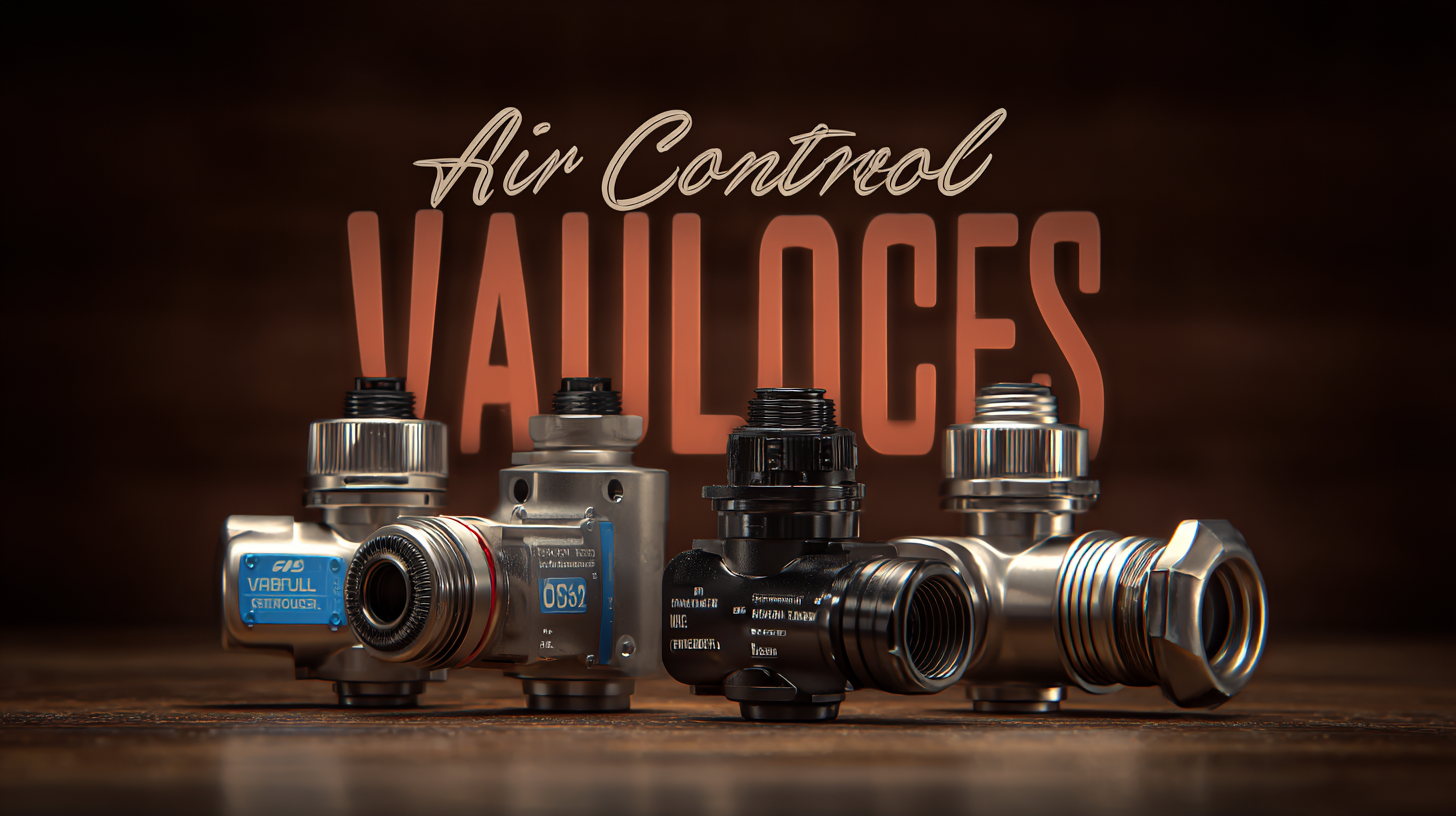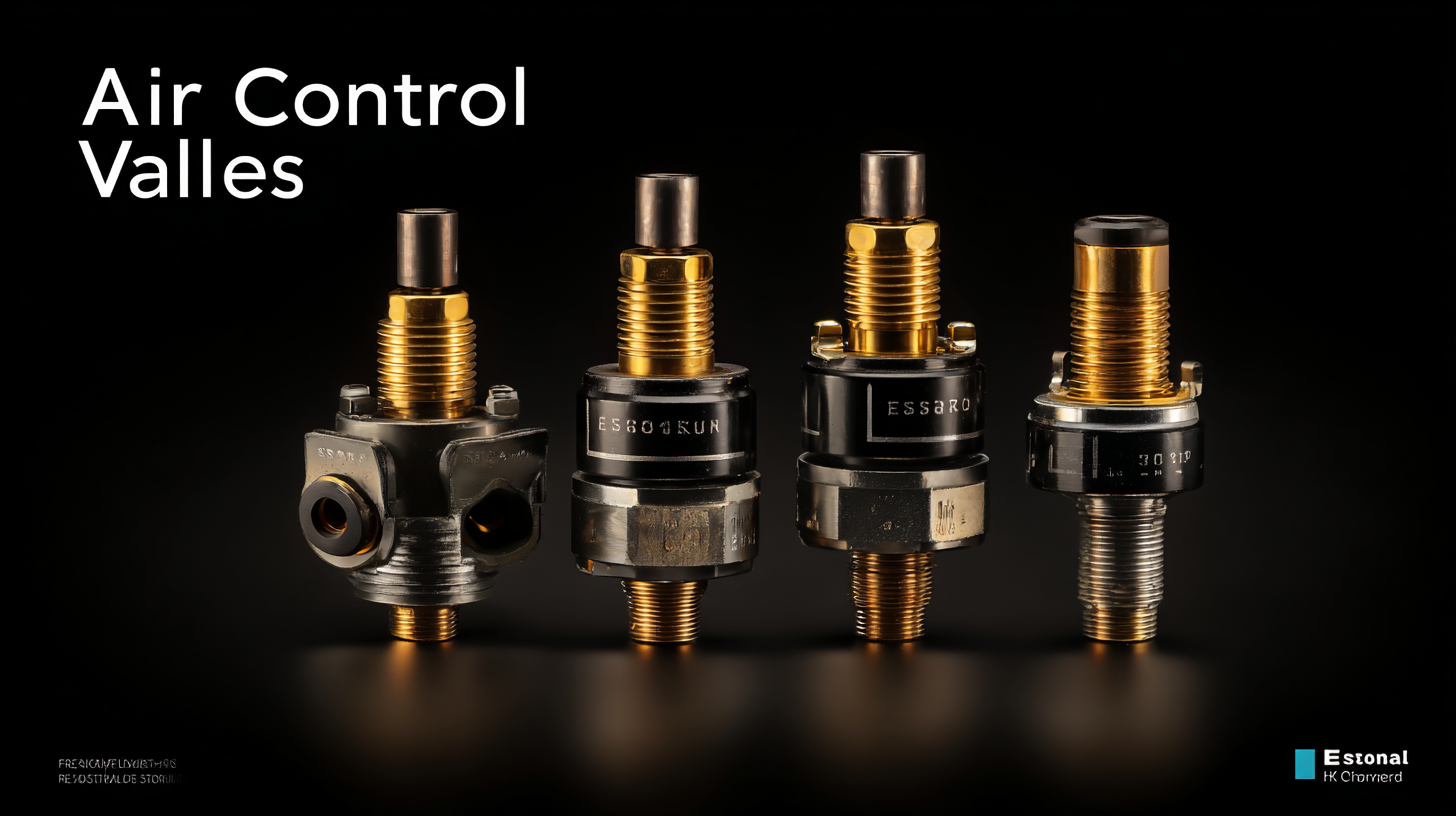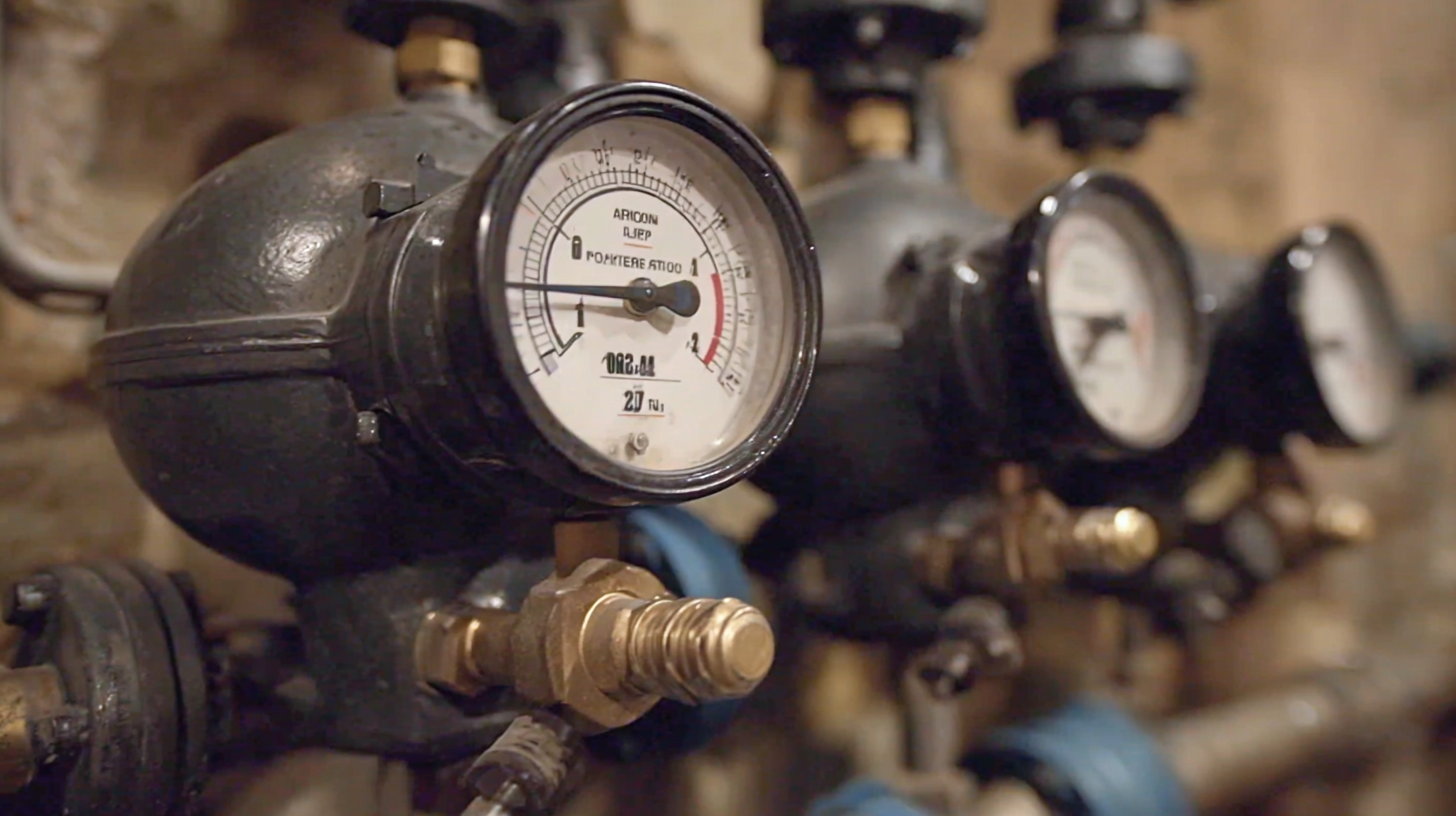Essential Guide to Choosing the Best Air Control Valves for Optimal Performance
When it comes to ensuring optimal performance in various industrial applications, the selection of quality Air Control Valves is paramount. According to recent industry data, the global market for air control valves is projected to reach $4.5 billion by 2025, highlighting their critical role in enhancing system efficiency and reliability. These valves regulate the flow of air and can significantly impact energy consumption and operational costs. However, the effectiveness of air control valves is heavily dependent on reliable suppliers who provide high-quality products tailored to specific requirements. Therefore, navigating the selection process for an ideal supplier requires an understanding of industry standards, product specifications, and supplier capabilities. This guide aims to equip you with essential knowledge and criteria for identifying reputable suppliers who can meet your needs for superior Air Control Valves.

Understanding Air Control Valve Types for Various Applications
When selecting the right air control valves, it's crucial to understand the different types available and their specific applications.
Air control valves come in various designs, including needle valves, ball valves, and butterfly valves, each offering unique benefits for managing airflow in differing scenarios.
Needle valves, for example, provide precise flow control, making them ideal for sensitive applications such as pneumatic equipment or laboratory settings.
On the other hand, ball valves are known for their robust sealing capabilities and quick operation, making them suitable for on-off applications in industrial environments.
In addition to knowing the types, it's essential to consider the operational environment and requirements. For high-pressure applications, a heavy-duty valve like a pneumatic actuator may be necessary, while lighter applications may benefit from plastic or aluminum valves that offer corrosion resistance without compromising performance.
Whether you're dealing with HVAC systems, material handling, or automation, knowing which valve type aligns with your specific needs will enhance efficiency and reliability.
This understanding allows engineers and technicians to select the best air control valves, ultimately driving optimal performance across various industries.
Key Benefits of Using Air Control Valves in Industrial Settings
Air control valves play a vital role in enhancing efficiency and safety in industrial settings. According to a report by Allied Market Research, the global market for industrial valves is expected to reach $90 billion by 2027, driven largely by the demand for improved automation and control systems. Air control valves specifically facilitate the regulation of air pressure and flow in pneumatic systems, reducing energy consumption and operational costs. This is crucial in industries such as manufacturing and automotive, where precise airflow is necessary for optimal machine performance.
In addition to energy savings, the use of air control valves contributes to enhanced operational safety. A study published in the Journal of Safety Research highlights that industrial sectors implementing automated air control systems reported a 35% reduction in workplace incidents due to improved airflow management. By ensuring that systems operate within safe pressure and flow parameters, air control valves not only help maintain equipment integrity but also protect employees from hazardous conditions. The key benefits of incorporating high-quality air control valves into industrial applications cannot be overstated, as they greatly support overall operational efficiency and safety.
Key Benefits of Using Air Control Valves in Industrial Settings
This chart illustrates the different key benefits of air control valves in various industrial applications, showcasing the impact on efficiency, cost savings, and maintenance reduction.
Factors to Consider for Optimal Air Control Valve Performance
When selecting air control valves for optimal performance, one must consider several key factors that play a significant role in their efficiency and functionality.
First and foremost, the application of the valve is critical. Different systems require specific types of valves that can handle varying pressures and flow rates. Assessing the operating environment, such as temperature and humidity levels, is also vital since these conditions can affect the material compatibility and durability of the valve.
Another important consideration is the control mechanism of the valve. Choosing between manual, pneumatic, and electronic control systems will depend on the level of precision needed for airflow regulation. Additionally, the size and connection type of the valve should align with the existing piping systems to ensure a seamless installation.
Performance specifications, such as response time, leakage rates, and noise levels, are also essential when evaluating the best air control valve for a specific application. By carefully analyzing these factors, one can make an informed decision that enhances system efficiency and reliability.
Comparisons of Air Control Valve Materials and Their Benefits
 When selecting air control valves, the material construction plays a pivotal role in
ensuring optimal performance and longevity. Common materials include aluminum,
stainless steel, and brass, each offering distinct advantages.
According to a report by MarketsandMarkets, the air control valve market is expected to
reach USD 1.2 billion by 2025, emphasizing
the importance of material selection in maintaining efficiency and reducing operational costs.
When selecting air control valves, the material construction plays a pivotal role in
ensuring optimal performance and longevity. Common materials include aluminum,
stainless steel, and brass, each offering distinct advantages.
According to a report by MarketsandMarkets, the air control valve market is expected to
reach USD 1.2 billion by 2025, emphasizing
the importance of material selection in maintaining efficiency and reducing operational costs.
Aluminum valves, known for their lightweight nature
and resistance to corrosion, are ideal for applications where weight reduction is crucial.
Conversely, stainless steel valves excel in high-pressure
environments and provide enhanced durability against wear and tear. Brass valves, while less
common, offer excellent sealing properties and thermal conductivity, making them suitable for
specific applications where heat is a concern.
Tip: When selecting an air control valve, assess not only the operating
environment but also the fluid types involved. For aggressive chemicals or high temperatures,
stainless steel may be the best choice, while
aluminum is preferable for lighter applications.
Tip: Regularly check the compatibility of valve materials with the
intended use case; failing to do so can lead to premature failure and increased maintenance costs.
An informed choice will contribute significantly to the efficiency and reliability of the overall
air control system.
Maintenance Tips to Extend the Lifespan of Air Control Valves
 Maintaining air control valves is essential for ensuring their longevity and optimal performance in various applications. Regular inspections can help identify wear and tear early on, allowing for timely repairs or replacements. Check for any signs of leaks, corrosion, or other damages that can compromise their functionality. Keeping the valves clean and free from debris will also facilitate smooth operation and reduce the risk of malfunction.
Maintaining air control valves is essential for ensuring their longevity and optimal performance in various applications. Regular inspections can help identify wear and tear early on, allowing for timely repairs or replacements. Check for any signs of leaks, corrosion, or other damages that can compromise their functionality. Keeping the valves clean and free from debris will also facilitate smooth operation and reduce the risk of malfunction.
Another important aspect of maintenance is lubrication. Using the appropriate lubricant can significantly extend the lifespan of air control valves. It minimizes friction between moving parts and prevents premature wear. Be sure to follow the manufacturer's guidelines regarding the specific type and frequency of lubrication required for your valves. Implementing a routine maintenance schedule can ensure that your air control valves operate at peak efficiency, reducing downtime and costly repairs in the long run.
Additionally, consider the operating environment when maintaining air control valves. Conditions such as temperature variations, humidity, and exposure to harsh chemicals can affect valve performance. Utilizing protective coatings or enclosures might be beneficial in challenging environments. Always stay informed about the manufacturer's recommendations and tailor your maintenance practices accordingly to achieve the best results.